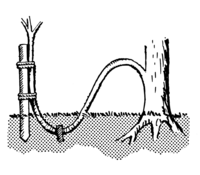
Photo from wikipedia
Ambient air quality monitoring data and radar tracking sonde data were used to study the atmospheric boundary layer structure (ABLS) and its changing characteristics over Wuhan. The boundary layer structure… Click to show full abstract
Ambient air quality monitoring data and radar tracking sonde data were used to study the atmospheric boundary layer structure (ABLS) and its changing characteristics over Wuhan. The boundary layer structure index (BLSI), which can effectively describe the ABLS, was accordingly developed and its ability to describe the near-surface air quality was analyzed. The results can be summarized as follows. (1) An analysis of the ABLS during seriously polluted cases revealed that the ABLS was usually dry and warm with a small ventilation index (VI); meanwhile, the ABLS during clean cases was usually wet and cold with a large VI. (2) The correlation between the air quality and BLSI at 100~300 m was good and passed the confidence level limit at 99%. Moreover, the correlation coefficient increased with the altitude at 10~250 m and showed a downward trend at 250~500 m. The correlation between the BLSI at 250 m and the ground air quality was the most significant (r = 0.312), indicating that the layer ranging from 0 to 250 m is essential for determining the ground air quality. (3) The BLSI considers both the vertical diffusion capability and horizontal removal capability of the atmosphere. Therefore, it is highly capable of describing the ABLS and the ground air quality.
Journal Title: Atmosphere
Year Published: 2018
Link to full text (if available)
Share on Social Media: Sign Up to like & get
recommendations!